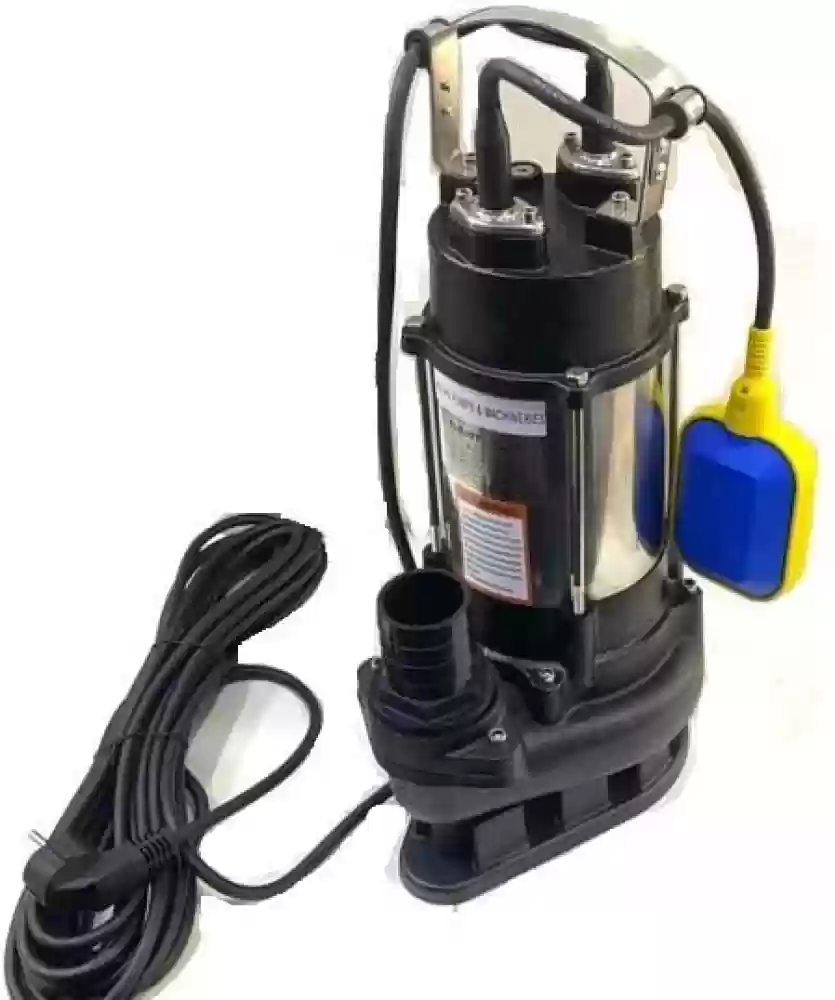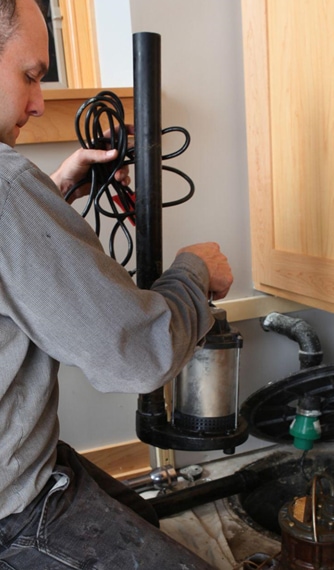Our Comprehensive Guide to Taking Care of a Sump Pump
Our Comprehensive Guide to Taking Care of a Sump Pump
Blog Article
How do you really feel about How to Care for Your Sump Pump?

Sump pumps are essential components in lots of homes, especially in areas susceptible to flooding or too much moisture. They aid avoid water damages by efficiently eliminating excess water from cellars or crawl spaces. Nevertheless, like any other home appliance, sump pumps call for regular upkeep to ensure they work efficiently when needed one of the most. Cleaning your sump pump is an essential part of its upkeep, and recognizing just how to do it correctly can save you from costly repair work and possible disasters.
Intro
Preserving a clean sump pump is vital for its proper functioning and longevity. Ignoring this important task can cause clogs, breakdowns, and eventually, water damage to your residential property. As a result, learning exactly how to clean a sump pump is critical for property owners that count on these tools to keep their basements completely dry and protected.
Comprehending the Sump Pump
Prior to diving into the cleaning process, it's important to have a fundamental understanding of just how a sump pump functions. Commonly mounted in a pit or basin listed below the basement flooring, a sump pump consists of a number of key elements, consisting of a pump, a float button, and a discharge pipeline. When water accumulates in the pit, the float button triggers the pump, which then pumps the water out through the discharge pipe, far from the structure's foundation.
Signs of a Dirty Sump Pump
Understanding when your sump pump requires cleaning is critical for preventing prospective malfunctions. Some common indications that show a dirty sump pump consist of unusual noises during operation, reduced water flow, and visible particles in the pit. If you see any of these signs and symptoms, it's vital to clean your sump pump immediately to prevent any type of more problems.
Preparing for Cleaning
Prior to you start cleaning your sump pump, it's important to take some security precautions. Begin by shutting down the power to the pump to prevent any electrical accidents. In addition, wear proper protective equipment, such as gloves and safety glasses, to secure on your own from dust, debris, and prospective virus.
Step-by-step Guide to Cleaning Up a Sump Pump
Turning off the Power
Begin by detaching the power supply to the sump pump to stop any kind of crashes while cleansing.
Getting Rid Of Particles and Dust
Utilize a bucket or an inside story to remove any type of noticeable particles, dirt, or debris from the sump pit. Dispose of the particles effectively to stop it from clogging the pump or the discharge pipeline.
Cleaning the Pump and Float Switch
When the pit is clear of debris, meticulously get rid of the pump from the pit. Inspect the pump and the float button for any type of signs of damages or wear. Utilize a soft brush or cloth to clean the surfaces and remove any kind of accumulated gunk.
Purging the System
After cleaning the pump and float button, purge the sump pit with clean water to remove any kind of staying dirt or sediment. This will aid make sure that the pump operates smoothly and effectively.
Checking for Proper Functioning
Before re-installing the pump, perform a quick examination to make sure that the float switch activates the pump correctly. Pour some water right into the sump pit and observe the pump's procedure. If whatever is functioning properly, you can reconstruct the pump and reconnect the power supply.
Maintenance Tips to Keep Your Sump Pump Clean
Along with routine cleansing, there are numerous maintenance ideas you can follow to maintain your sump pump in optimal problem:
Verdict
Cleansing your sump pump is a critical facet of its maintenance and ensures that it operates properly when you require it the most. By following the actions detailed in this guide and including routine upkeep right into your routine, you can expand the lifespan of your sump pump and protect your home from water damage.
6 STEPS ON HOW TO CLEAN A SUMP PUMP PROPERLY
UNDERSTANDING SUMP PUMPS
Your sump pump plays a crucial role in protecting your home by managing and removing excess water. It primarily functions as a “shield”, guarding your basement against the damaging effects of water accumulation. The pump is housed in a sump pit in the lowest part of your basement, and its job is to pump out any water that collects there.
During heavy rainfalls or when snow melts rapidly, water can infiltrate your basement, posing potential risks like flooding, structural damage, and harmful mold growth. Here, the sump pump springs into action, pumping out the intruding water and directing it away from your home.
SAFETY FIRST
Before cleaning, remember to prioritize safety. Disconnect the sump pump from the power source to prevent any accidental electric shocks. Also, wear sturdy gloves to protect your hands from any sharp or dirty components within the pump.
REMOVE THE SUMP PUMP
After ensuring your safety, the next step is to remove the sump pump from its pit. Doing this might require careful maneuvering as you don’t want to damage any pump components. Once removed, clean the sump pit to remove any accumulated debris or sludge.
INSPECT THE PUMP
Inspect the pump for any visible signs of wear or damage. Check the power cord, float switch, and impeller housing. If any components look worn out or damaged, consider replacing them to ensure optimal performance.
CLEAN THE PUMP
Thoroughly clean the pump with warm, soapy water. Make sure to rid it of any dirt, gravel, or other debris that might impede its performance. You can use a toothbrush to clean the small, hard-to-reach parts of the pump.
REINSTALL THE SUMP PUMP
Reinstall the pump into the sump pit Make sure it’s positioned correctly to remove the water effectively Once it’s back in place, reconnect it to the power source TEST THE PUMP
Finally, pour some water into the pit to ensure the pump works correctly. It should start automatically and begin pumping out the water; if it doesn’t, check the power source and the positioning of the pump.
Remember, while cleaning your sump pump is an essential part of home maintenance, hiring a professional plumber for a thorough inspection and cleaning at least once a year is also important. This will ensure that your pump is in optimal condition, ready to protect your home from potential water damage.
BEST PRACTICES FOR CLEANING SUMP PUMP DISCHARGE PIPES
Regular Inspection: Regularly inspect your discharge pipes, especially during heavy rainfall or snowmelt periods. Look for any signs of blockage or damage. Early detection of problems can prevent serious issues down the line. Periodic Cleaning: Over time, sediment and debris can accumulate in the discharge pipes, impeding the flow of water. Regular cleaning helps keep the pipes clear and functioning efficiently. You can use a high-pressure water jet to effectively clean the pipes. Insulation During Winter: In colder climates, discharge pipes can freeze, blocking the outflow of water. Protect your discharge pipes from freezing temperatures by insulating them with foam pipe insulation. This will ensure the sump pump can continue to discharge water even in freezing conditions. Proper Positioning: The discharge pipe should be positioned to direct water away from your home’s foundation. Improper positioning can lead to water seeping back into the basement. Ensure the pipe is long enough and angled correctly. Installation of a Check Valve: A check valve prevents water from flowing back into your sump pit after the pump has pushed it out. Installing a check valve helps maintain the efficiency of your sump pump and reduces the risk of flooding. Minimize Pipe Turns: Every curve or turn in the discharge pipe can decrease the efficiency of water flow. By minimizing turns and bends in your discharge pipe, you can increase the efficiency of your sump pump. https://www.fullspeedplumbing.com/how-to-clean-a-sump-pump-properly9999/

Hopefully you enjoyed our topic on . Thank you for finding the time to read through our article. Remember to pause to promote this page if you appreciated it. I cherish reading our article about How To Effectively Clean A Sump Pump.
Explore Now Report this page